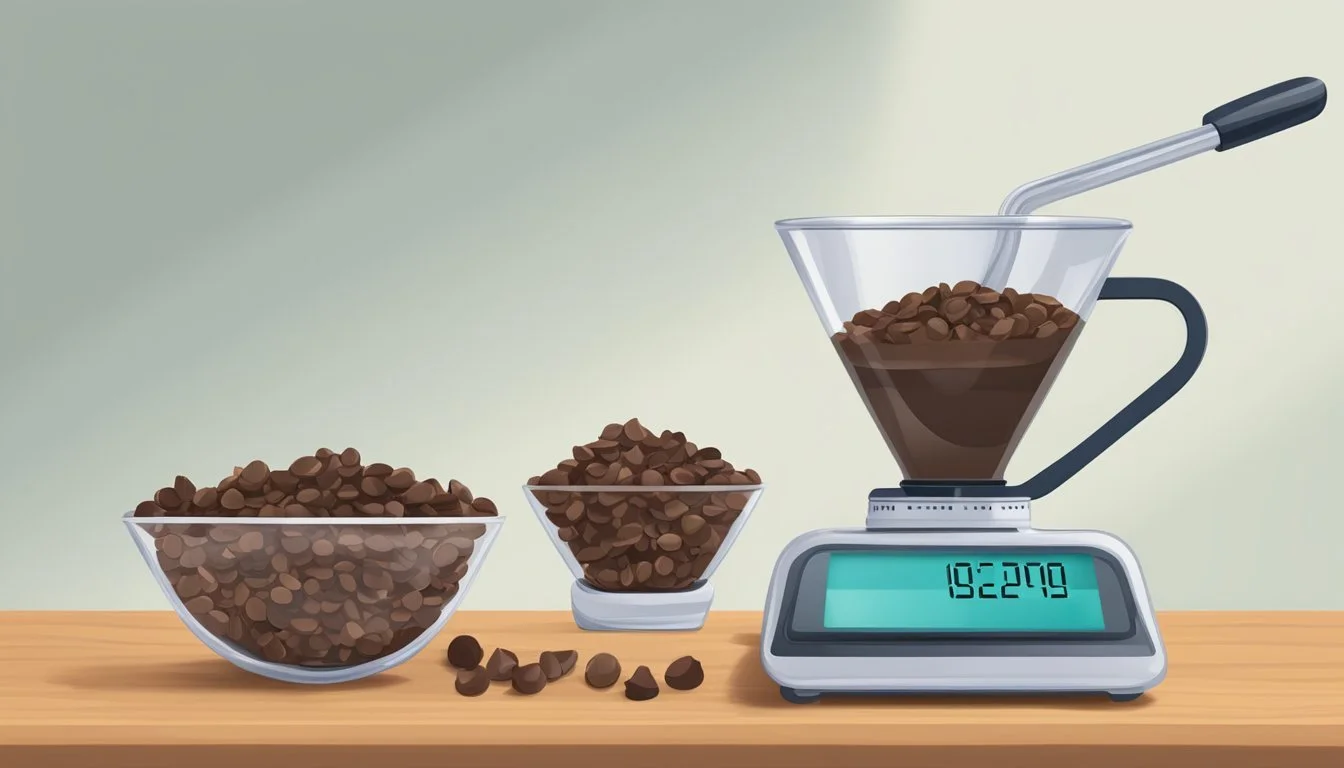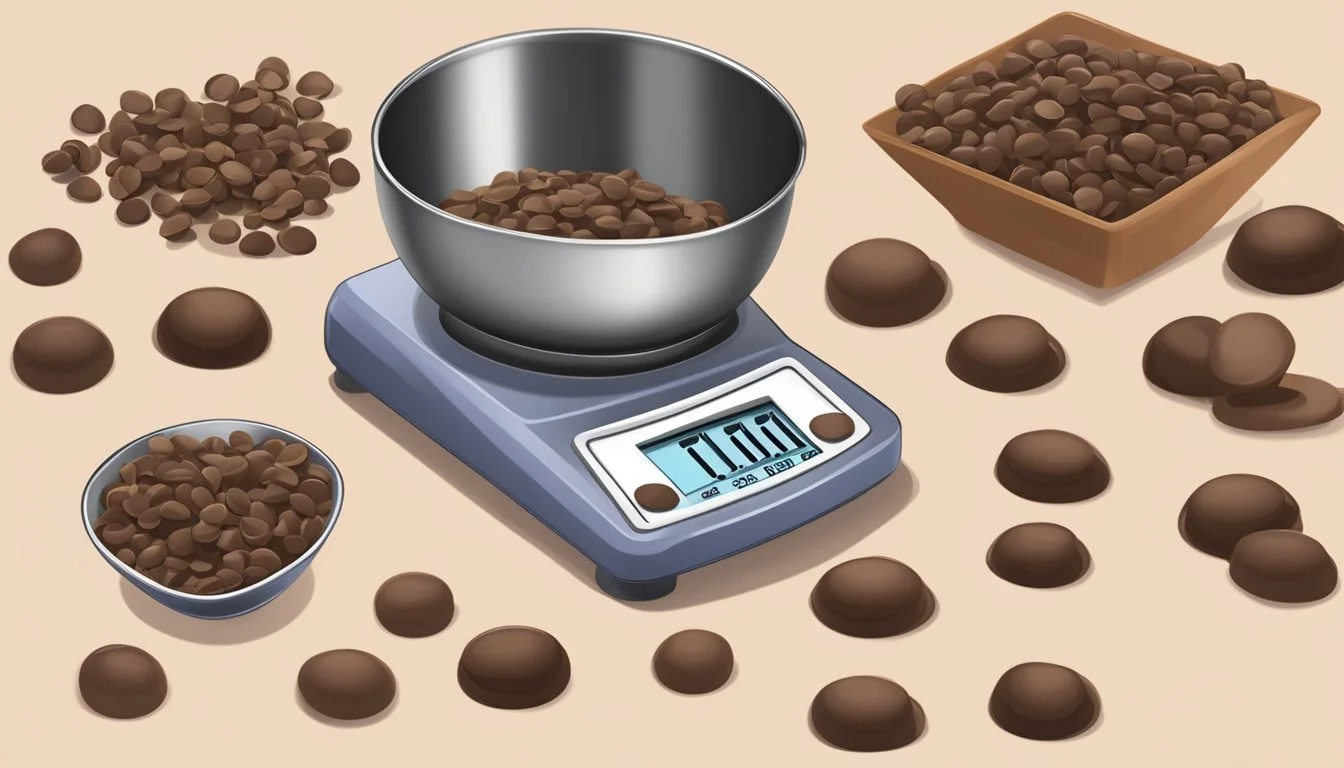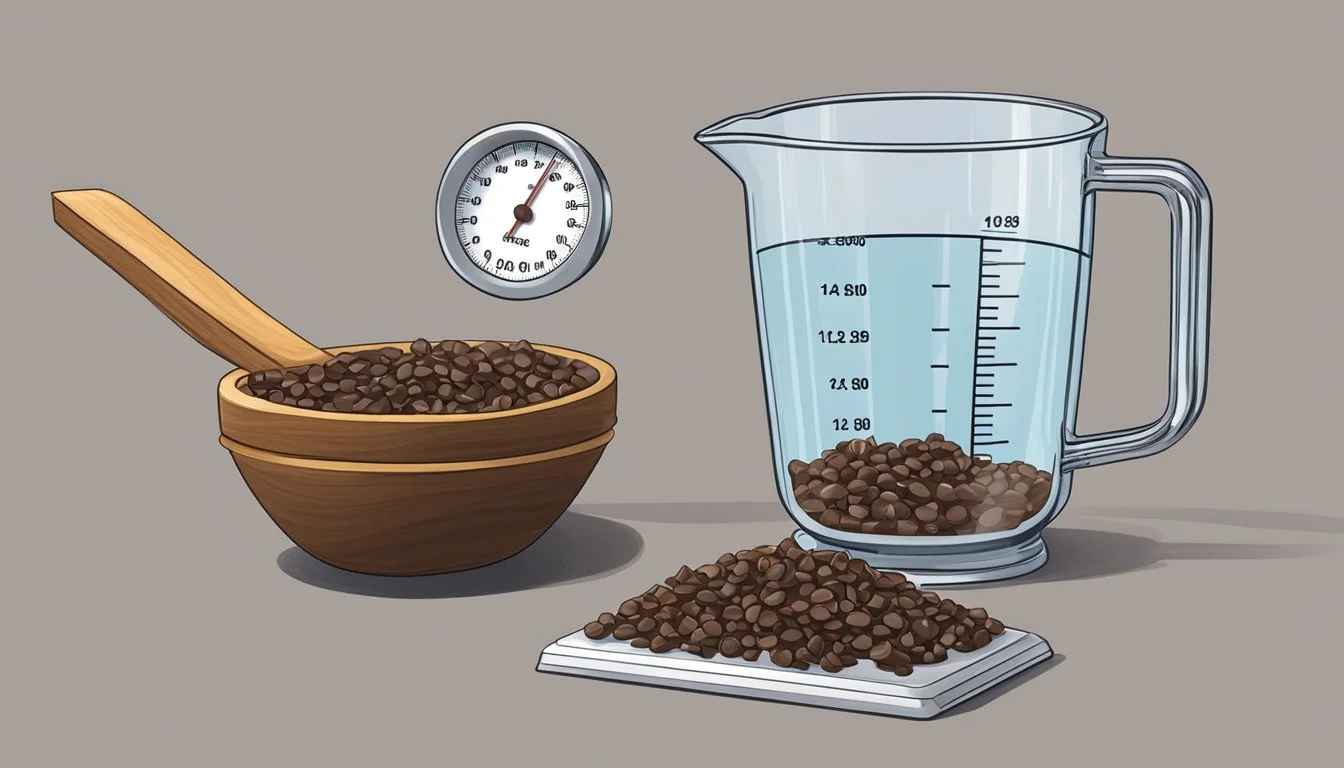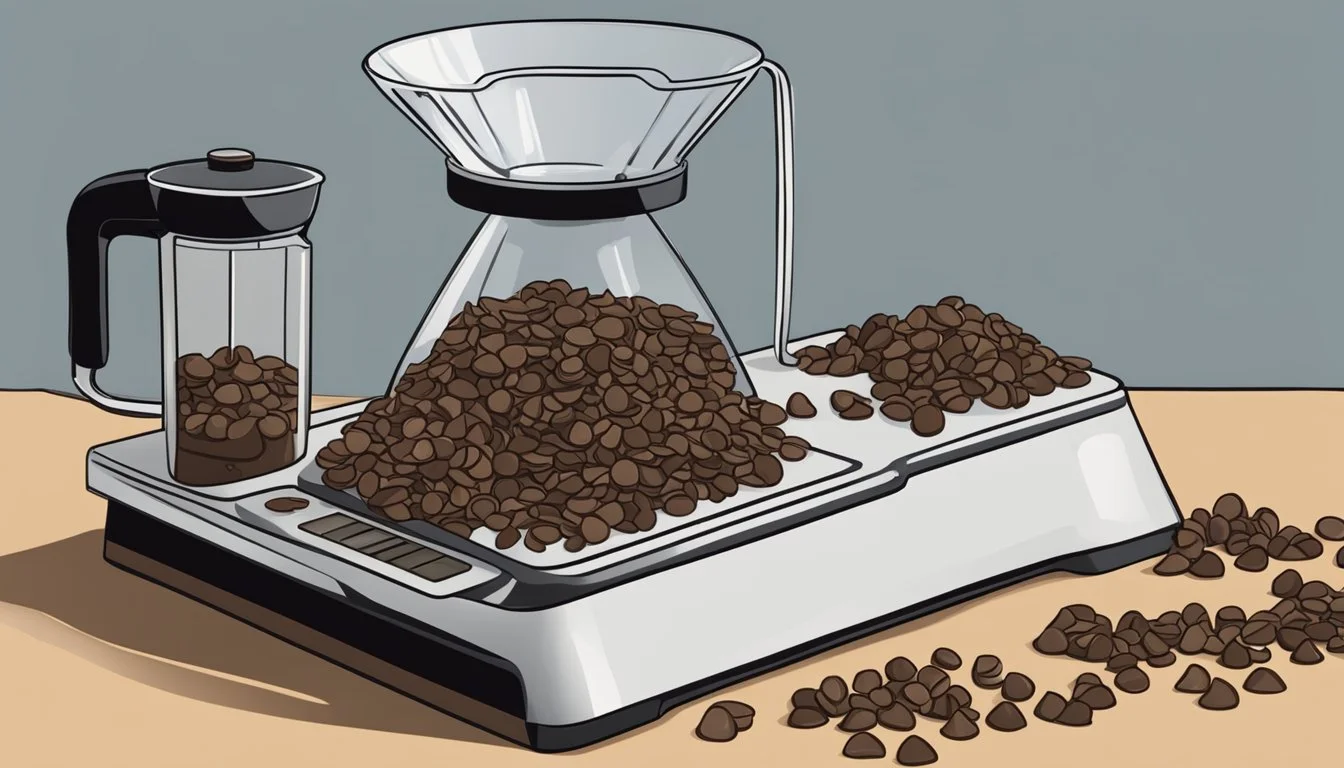How Many Cups in a Pound of Chocolate Chips
Precise Measurement Guide
Determining the conversion of chocolate (What wine goes well with chocolate?) chips from pounds to cups is crucial for both baking and cooking enthusiasts. Accurate measurements ensure that recipes are followed precisely, which is essential for the desired outcome of a dish. A pound of chocolate chips typically translates to approximately 2.6 to 3 cups. However, the exact volume can vary based on factors such as the size and shape of the chips, as well as the brand.
When measuring chocolate chips, it is important to consider that the density and the way they fill a measuring cup can affect the total volume. As chocolate chips are a dry ingredient, their volume does not correspond directly to fluid ounces as it would with liquids. Bakers often prefer weighing ingredients to guarantee consistency, especially for ingredients like chocolate chips, which play a significant role in the texture and flavor of baked goods.
Packaging may sometimes offer brand-specific measurement guidelines, which can be helpful for achieving the precise amount needed for a recipe. However, when such information is not available, using the average conversion of 2.6 to 3 cups per pound of chocolate chips is reliable. This conversion is particularly useful when recipes call for volume measurements, but chocolate chips are purchased by weight.
Understanding Weight and Volume
When measuring ingredients, understanding the difference between weight and volume is crucial, as they represent two different ways of quantifying an ingredient.
Weight Vs. Volume
Weight measures the mass of an ingredient, typically in ounces (oz) or grams (g), while volume measures the space an ingredient occupies, usually in fluid ounces (fl oz), cups, or milliliters (ml). For dry ingredients like chocolate chips, weight offers more precision because volume can be affected by the size and shape of the chips.
Units of Measurement
Weight:
Ounces (oz)
Pounds (lb)
Grams (g)
Kilograms (kg)
Volume:
Cups (cup)
Fluid ounces (fl oz)
Milliliters (ml)
Liters (l)
In the kitchen, a pound (lb) equates to 16 ounces in weight, and when it comes to water, a pound equals two cups in volume.
Kitchen Scale Use
Using a kitchen scale ensures accurate measurement of ingredients by weight, which is especially important in baking for consistent results. A digital scale can be set to different units of measurement and will provide immediate readings, which eliminates the guesswork and possible errors of volume measurements. When measuring pounds of chocolate chips, the scale will display the weight, but not the volume; separate conversion is necessary to translate weight into cups.
Essential Measurement Tools
The ability to measure ingredients precisely is crucial in baking, as the outcome depends heavily on the accuracy of the measurements. Appropriate tools ensure that a recipe's integrity is maintained, especially when converting weight to volume measurements.
Types of Measuring Cups
There are two primary types of measuring cups used in the kitchen: one for dry ingredients and one for liquids. Dry measuring cups are designed to be filled to the top and then leveled off. Liquid measuring cups are generally made of glass or plastic and have a spout for pouring; they are marked with measurements on the side for various volumes.
Standard Measuring Cup
For dry ingredients like chocolate chips, a standard measuring cup is used. The most common sizes are:
1 cup
1/2 cup
1/3 cup
1/4 cup
These cups are meant to be filled to the brim with a substance and then leveled off using a straight edge, like the back of a knife, to ensure that the measure is accurate and not heaped.
Importance of Accuracy
Accuracy in measuring dry ingredients is essential for the consistency and texture of the final product. Small mistakes can lead to significant variances. For elements that require precision, such as baking powder or baking soda, using measuring spoons in tablespoon and teaspoon sizes is also vital. Ensuring a level measure with a straight edge helps maintain the accuracy required for successful baking results.
Calculating Chocolate Chip Quantities
Understanding the conversion between weight and volume units is essential when measuring chocolate chips for recipes. Accurate conversions ensure that the desired consistency and taste of the final product are achieved.
Conversion Basics
Converting from pounds to cups involves understanding the basic relationship between weight (pounds) and volume (cups). One pound is a unit of weight, while a cup is a unit of volume. Although these two units measure different aspects, conversions are possible with the right density information.
From Pounds to Cups
To determine how many cups are in a pound of chocolate chips:
A standard 12-ounce bag of chocolate chips is roughly equivalent to 2 cups.
Since a pound is 16 ounces, it translates to approximately 2 2/3 cups.
This conversion applies to typical chocolate chips. When dealing with different sizes or densities of the chips, the cup measurements can vary slightly, and precise conversions can be obtained using a conversion chart or manufacturer's recommendations.
Factors Affecting Conversion
The number of cups in a pound of chocolate chips can be influenced by several factors:
Size and Shape: Mini, standard, jumbo, and chunk chocolate chips will all have different volumes when measured by weight due to the space they occupy.
Brand and Density: Different brands may have slight variations in the density of their chocolate chips.
Packing of Cups: How tightly or loosely the chocolate chips are packed into the measuring cup can affect the measurement.
A comprehensive approach accounts for these factors and may incorporate fractional measurements for precision, especially important in baking where accuracy is key.
Chocolate Types and Measures
Understanding the varying measures for different types of chocolate chips is essential when converting from weight to volume in recipes. The number of cups in a pound of chocolate chips can differ based on the type and size of the chips used.
Different Chocolate Varieties
Chocolate chips come in various types, each with its unique properties. Milk chocolate chips are known for their creamy taste and are usually lighter in color. Dark chocolate chips contain less sugar and milk, offering a richer and more intense flavor. On the lighter side, white chocolate chips differ as they do not contain cocoa solids, instead comprising cocoa butter, sugar, and milk.
The type of chocolate influences the weight and volume ratio:
Milk Chocolate Chips: Lighter and creamier, their volume to weight relationship might slightly differ from the denser varieties.
Dark Chocolate Chips: Tend to pack more densely due to less milk content, potentially offering more volume per pound.
White Chocolate Chips: May vary in density due to higher fat content from cocoa butter.
Variation in Chocolate Chip Sizes
The size of chocolate chips alters the amount that fits into a measuring cup. Smaller chips like mini chocolate chips take up less space due to less air between them, resulting in a greater weight per cup. Conversely, jumbo chocolate chips are bulkier and have more air space when measured, decreasing the weight per cup.
For standard sizes, here is a reference for the number of cups in a pound of chips:
Mini Chocolate Chips: More cups per pound due to smaller size and less air space.
Jumbo Chocolate Chips: Fewer cups per pound as their large size creates more air space.
It's advisable always to follow recipe specifics and check the packaging for the most accurate measurement as these can vary by brand and chocolate type.
Practical Baking Tips
When it comes to baking, the consistency of ingredients and accuracy of measurements are cornerstones to ensuring successful results.
Consistency in Baking
In baking, consistency isn't just important; it's everything. The consistency of ingredients like chocolate chips can influence the texture and uniformity of the final dish. For instance, using a consistent size of chocolate chip across different dishes guarantees even distribution and uniform baking time, which is crucial for dishes like chocolate chip cookies or muffins. When ingredients are consistent, bakers can also ensure that each bite has the intended flavor and texture they're aiming for.
Accurate Measurements in Baking
For a confident baker, precision is non-negotiable. Accurate measurements ensure that dishes not only taste great but also have the desired texture and appearance. When it comes to measuring chocolate chips, it’s essential to recognize that:
A pound (16 ounces) of chocolate chips typically translates into about 2.5 to 3 cups.
Measuring by weight is more reliable than measuring by volume. This is due to the air and space that can exist between chocolate chips, which affects the volume.
To bake with precision, a digital scale becomes an indispensable tool in the kitchen. Bakers should employ the tare function on their scales to account for the weight of the measuring container, allowing for an accurate count of the chocolate chips themselves. Moreover, knowing the specific brand's cup-to-pound ratio can be beneficial, as this might vary slightly. It's a small detail, but it can make a substantial difference in the outcome. Remember, baking is both an art and a science – every gram counts.
Additional Baking Ingredients
When incorporating chocolate chips into baking recipes, it's important to understand the role of additional ingredients which influence texture, taste, and structural integrity. Below are key ingredients often used alongside chocolate chips in baking:
Nuts: They add crunch and depth of flavor. Commonly used options include walnuts, pecans, and almonds. Nuts are measured by the cup if whole or chopped, and by weight if ground.
Flour: This is the foundation for most baked goods, providing structure. Standard measuring is 120 grams per cup of all-purpose flour.
Unsweetened Cocoa Powder: Offers intense chocolate flavor. Recipes typically call for a measured quantity in cups; 1 cup equates to about 120 grams.
Raisins: Can be used to introduce natural sweetness and chewiness. A cup of raisins weighs approximately 145 to 165 grams.
Peanut Butter: Imparts a rich, creamy texture and flavor pairing well with chocolate chips. Often measured by volume, with 1 cup weighing about 250 grams.
Sour Cream: Adds moisture and subtle tang, making cakes moist and dense. It's typically measured by the cup, with 1 cup of sour cream weighing around 240 grams.
Ingredient Measurement by Volume Approximate Weight Nuts (chopped) 1 cup 150 grams All-Purpose Flour 1 cup 120 grams Cocoa Powder 1 cup 120 grams Raisins 1 cup 145-165 grams Peanut Butter 1 cup 250 grams Sour Cream 1 cup 240 grams
Bakers should measure these ingredients carefully to ensure their flavors complement rather than overpower the sweetness of the chocolate chips. Precision in measurement maintains the desired results in the recipe's final product.
Health Benefits of Chocolate
Chocolate, particularly dark chocolate, is not just a treat for the taste buds, it also offers several health benefits when consumed in moderation. The key component that contributes to these benefits is the presence of antioxidants.
Antioxidants are crucial in neutralizing free radicals—unstable molecules that can cause cell damage, which is linked to premature aging and various illnesses. Dark chocolate has a high concentration of cocoa solids, which contain these beneficial antioxidants. In contrast, milk chocolate contains fewer cocoa solids and a higher amount of sugar and fat, reducing its potential health benefits.
A serving of dark chocolate provides a good source of flavonoids, a type of antioxidant. The recommended daily intake to reap these benefits is about 20g-30g of dark chocolate with a cocoa content above 70%.
Nutritional Profile of Dark Chocolate
Calories: Moderate
Total fat: Higher due to cocoa butter
Saturated fat: Present but also includes stearic acid, which is less concerning for heart health
Fiber: Presence in cocoa contributes to dietary fiber intake
Benefits:
Cardiovascular health: The antioxidants in dark chocolate may reduce the risk of heart disease by improving blood flow and lowering blood pressure.
Stress Reduction: Some studies suggest the flavonoids in dark chocolate can alleviate stress and improve mood.
Improved cognitive function: The consumption of dark chocolate might enhance cognitive function due to increased blood flow to the brain.
While dark chocolate chips can be a healthier option due to their antioxidants, they should be consumed in moderation as part of a balanced diet to maintain overall health.








